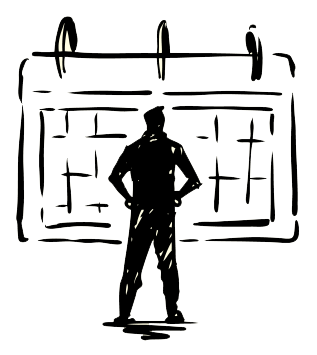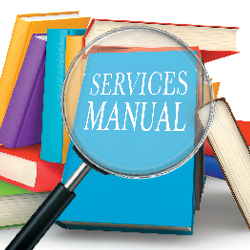|
exhibiting 101
 Staff Training Primer
Ensure your booth staffers know their "A" leads from their elbows by giving them the exhibit-marketing knowledge they need. By Betsy Earle
For many exhibitors, booth staff training is an afterthought, the effects of which can often be clearly seen when walking the show floor. But for a face-to-face marketing program to work effectively, staff training needs to be a priority. While a lot of businesses have an ample supply of excellent salespeople, these employees don't necessarily know the best way to staff an exhibit and often assume that their sales approach on the show floor should be the same as it anywhere else – and they're very confident in this assumption.
However, with some organized planning, exhibit managers and marketing staff, who are more fluent in the finer points of engaging with booth visitors and the company's objectives at a particular show, can look like experts and gain the buy-in of the sales team and any other company reps who are attending the event. Here are key elements to focus on during your booth staff training along with a few ways that you can implement your plan effectively. 1 Identify your objectives. The first piece of the staff-training puzzle is to figure out what it is that you want your booth staff to do at the show. Ideally, you'll have your exhibit display plan figured out before you conduct your staff training so you have a clear picture as to what's happening where in the booth. As part of your orchestration plan, you'll need to define what roles need to be filled within the booth. Will the booth have a reception desk? How many people need to staff it? How many activations or demonstrations do you have going on? If it is a food show or an event with a lot of giveaways, will someone need to contact the general service contractor's (GSC's) accessible storage area to obtain additional samples in the middle of the day? Does everyone know where the extra napkins, toothpicks, or phone chargers are stored? Before you can define a plan for your staff, you'll need to make sure that the tasks they'll be handling meet the strategies and goals of your program. After thinking about what's physically happening in the booth, you'll want to work closely with your team to determine best practices for engaging with different types of attendees and define the sales methodology that works for your booth staff. This includes steps to figure out what attendees are interested in, steps staffers should take when they meet with someone, and how they should communicate a follow-up plan. Consider working with your director of sales or a few senior sales reps to determine what their normal approach is and talk to them about the sales cycle of your customer. Work with the team on the definition of your target customer and identify that individual's persona. Outline this in your booth staff training so constituents know exactly who it is that they are looking for. Next, outline the products and services of focus, and be sure that the staff is clear as to the features and benefits of each product line. 2 Create some ground rules. In addition to what you want to sell, determine how you want to sell it. As a rule, you'll want to figure out how aggressive your staff should be in trying to connect with attendees. Personally, I think it's awful when someone comes into the aisle and tries to get me into their booth and will avoid them at all costs, but some might disagree. You'll also want to work with your team to determine a way to end customer interactions politely. This is especially applicable if you have a small booth with limited staff. There are often people walking show floors that will keep talking, and they might not be the right fit for your product or service. While you don't want to dismiss them, you will want to work with your staff on a way to graciously end these conversations. A great topic to include in your booth staff training is "Listen before speaking." If your sales team is used to sales calls or trainings where their audience has already expressed interest in your product or service, this may surprise them. They might typically get to a client site ready to share everything that your company has to offer. But you'll want to remind them that a show attendee isn't necessarily interested in your company, and that attendees are trying to cover lots of territory in a short period of time. The attendee might be at the show for any number of reasons, such as educational courses, a speaking engagement, or training with one of your competitors. So establish strategies to help reps focus on listening to booth visitors and asking what they need before they start discussing your products and services. Another crucial step is outlining what you want your team's booth etiquette to look like. Some of this encompasses rules for your team members themselves (e.g., phone usage, clustering, etc.). Here are a few key recommendations, along with some reasons why. You can adjust these to your own needs, but each of them is worth considering.➤ Don't cluster in the booth. When an attendee sees a group of staff members huddling together and all wearing the same color of gear, they are likely going to be too intimidated to try to engage in conversation. As a rule, less extroverted showgoers won't want to interrupt a group of people talking, even if they're interested in the product this company has to offer. ➤ Stay off your phones. I realize that email is constantly coming in and that "normal" work doesn't stop just because someone is staffing a trade show booth. That said, staring into a phone or laptop makes a person look disinterested in passersby. ➤ No eating in the booth. This is an obvious one. I will never forget the day I saw a lady with fingers covered in nacho cheese trying to sell her products. Enough said. ➤ Avoid leaving the booth unstaffed. If there is no one in your exhibit, then there is no one to explain your offerings. Think about how awkward it would feel if you walked into a retail store and there wasn't anyone working. Yes, staffers will need to go to the restroom, but the booth must always have at least one attendant. ➤ Wear the uniform. Will staffers receive matching shirts but have to provide their own dark pants and black shoes? Then give them time to prepare. I've also had clients set up online ordering systems or surveys to collect sizes and shipping info. 3 Assess the field. Before sending the team out to talk to the masses, you'll also want to clearly define your lead-management strategy. This can be as complex as setting up your own internal lead-retrieval system, or it can be as basic as selecting qualifiers to plug into the show's software. Start by working with your stakeholders to define the perfect lead, as well as product and/or service categories of interest. This might include specific brands, product lines, or service areas. Then determine which details you want noted. Are they a current customer? Is this their first time at the show?  I like to make sure that I also lay out a chronological agenda, with clear start and end times, and include any group outings, dinners, activities, or trainings that are relevant to the team.
I like to make sure that I also lay out a chronological agenda, with clear start and end times, and include any group outings, dinners, activities, or trainings that are relevant to the team.
If you're planning in-booth product or service demonstrations, is there a particular way that you want these demos conducted? Do you want three of your six products to be featured? Do you want attendees to fill out a form and check off their interests? Whatever it is, spell out the process so staffers know exactly what the goals are. Lastly, are you personally going to be at the show? If not, determine who your booth captain will be. Let them know the plan and make sure they're comfortable with it. Also clarify what authority this role carries. Can they make changes on site? Are they authorized to approve any at-show expenses? Do they need to open and close the booth each day or charge the lead-retrieval devices at night? Define what this booth captain will be responsible for, outline it, and communicate it clearly. Having looked at all the necessary key training elements to cover with your stakeholders, outline these with your team members. How are you going to get your booth staff's buy-in, and how are you going to convey your plan to make sure everyone is on the same page? My recommendation is to not wait until you get to the event to get your team ready to go, but rather work on training staff before they get to the show floor by completing the following two-step process. 4 Come up with a game plan. I like to refer to this as the Pre-Show Communication Document, but you can call it whatever you want. It's basically an orchestration document that includes key information about the upcoming show, along with some of the typical dos and don'ts. Begin this document with some of the basic communication guidelines, such as show hours, booth number, the name of the venue, and which hall you'll be in. Provide contact information for all key parties who will be on site, such as team leads, booth captains, installation-and-dismantle leads, and hotel contacts. I like to make sure that I also lay out a chronological agenda with clear start and end times, and I include any group outings, dinners, activities, or trainings that are relevant to the team. Is there a speaker presenting on a main stage at 2 p.m. on Tuesday? Include it all. Most likely, they won't need too much detail on the I&D schedule, but it wouldn't hurt to add. I suggest also adding listings for items such as requested or mandatory attire, booth staffing schedules, and how or where staff should get their badges. When it comes to staff attire, it's best to incorporate visual examples of what your team show should wear, e.g., screenshots of appropriate footwear, personal apparel, and company-provided gear. If your booth is complex or has a lot of activations, incorporate CAD drawings or booth renders within the pages so your booth staff knows what to expect. Ideally, this would also include a list of products and services that you're showing, along with any key activations. For example, do you have an Instagram wall along an aisle? What's the official show hashtag? What's your team's hashtag? Over time, this presentation will morph into a template for you, one where you can make changes for each show by adding and subtracting – and your team will get used to how everything is laid out. 5 Coach your team. This is a great opportunity for booth staff to have a chance to voice concerns or ask questions. In a perfect world, this will be a positive experience that avoids negativity or coming across as too bossy. Try to send out the Pre-Show Communication Document before this training session so that staffers have some time to read it and prepare a list of questions that they may have. Go through each section with the team and clarify any gray areas. This is an opportunity to add an addendum to your master document for anything that your team notices was missed. Once you get to the show, you'll also want to coordinate a pre-show meeting on site. If you aren't going to be there yourself, be sure your booth captain is ready to run this training. During this on-site meeting, confirm your booth staffing schedule to make sure that everyone is clear. You'll also want to review the lead scanning process and run through scanning some test badges to ensure that everyone feels comfortable with the system that you've chosen. I like to turn the lead-retrieval devices over to the staff once we've gone through the training to do some hands-on practice and try going through the steps themselves. This helps them to become more comfortable with navigating the procedures. There is a lot you can do to help your booth staff grow, and the process will constantly evolve as show floors change and lead-retrieval systems advance. But at the end of the day, it's about communicating effectively with people. The more clearly you can define your plan, the more comfortable everyone will feel knowing what needs to be accomplished, the more buy-in you'll have, and the happier your staff will be to work together. And I'll leave you with one last thought: Try to make training enjoyable and fun. We all know that booth staffing is difficult work, but the more pleasant we can make it, the better our team will perform and the more effective our trade show program will be. E  Betsy Earle, CTSM
Betsy Earle, CTSMmanaging director and founder of Event Driven Solutions LLC. Earle obtained her MBA at the University of Miami and earned her Diamond-level CTSM designation in 2018. Exhibiting101@exhibitorgroup.com
|
|
|
||||||||||||||||||||||||||||
|
|
||||||||||||||||||||||||||||
|
TOPICS Measurement & Budgeting Planning & Execution Marketing & Promotion Events & Venues Personal & Career Exhibits & Experiences International Exhibiting Resources for Rookies Research & Resources |
MAGAZINE Subscribe Today! Renew Subscription Update Address Digital Downloads Newsletters Advertise |
FIND IT Exhibit Producers Products & Services All Companies Get Listed |
EXHIBITORLIVE Sessions Exhibit Hall Exhibit at the Show Registration |
ETRAK Sessions Certification F.A.Q. Registration |
EDUCATION WEEK Overview Sessions Hotel Registration |
CERTIFICATION The Program Steps to Certification Faculty and Staff Enroll in CTSM Submit Quiz Answers My CTSM |
AWARDS Exhibit Design Awards Portable/Modular Awards Corporate Event Awards Centers of Excellence |
NEWS Associations/Press Awards Company News International New Products People Shows & Events Venues & Destinations EXHIBITOR News |
||||||||||||||||||||
|
||||||||||||||||||||||||||||






